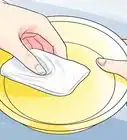This article was co-authored by Susan Stocker and by wikiHow staff writer, Kira Jan. Susan Stocker runs and owns Susan’s Green Cleaning, the #1 Green Cleaning Company in Seattle. She is well known in the region for outstanding customer service protocols — winning the 2017 Better Business Torch Award for Ethics & Integrity —and her energetic support of green cleaning practices.
There are 14 references cited in this article, which can be found at the bottom of the page.
This article has been viewed 13,068 times.
When your pans start looking crusty and stained, we all know that dish soap alone just won’t cut it. So how do you get rid of stains and make your pans look new again? We’ve put together 11 tried-and-true ways to clean your pans and restore their glorious shine. The best part is that you probably already have the cleaning tools you need at home. Keep scrolling to learn how to clean up your pots and pans so they look as good as the day you bought them.
Steps
Baking soda and hydrogen peroxide
-
Use baking soda and hydrogen peroxide for an easy home cleaning solution. Sprinkle about ¼ cup (about 50 g) of baking soda over your pan. Then, add 2-3 tbsp (30-44 mL) of hydrogen peroxide a few drops at a time until you get a thick paste.[1] X Research source Let the mixture sit for up to 2 hours. Scrub off the mixture and any excess grime with a soft sponge, and enjoy your sparkling pan![2] X Research source
- This method is safe to use on non-stick pans.
Vinegar and boiling water
-
Boil a 1:1 ratio of vinegar and water in a pan to remove stubborn burnt spots. Make sure you add enough liquid to completely cover any stains. Bring the mixture to a boil over medium heat, and let it boil until you see any caked-on material start to come off.[3] X Research source Turn off the heat, dump out the mixture, and wash the pan with soap and water once it’s cool.
- Alternatively, use a long-handled scrub brush to scrub the pan right after you’ve turned the burner off, so the pot will still be hot. Just be very careful and wear an oven mitt to hold the scrub brush.[4] X Research source
- This method is safe to use on non-stick pans.
Baking soda and vinegar
-
Combine a 1:1 ratio of baking soda and vinegar to make a DIY scouring paste. Apply the paste onto your pan and let it sit for 20 minutes. Then, take a sponge or scouring pad and scrub off any stains.[5] X Research source
- If you have a large enough sink, try this alternative for stubborn stains: plug the sink and fill it with hot water. Add ½ cup (about 100g) baking soda and ½ cup (118mL) vinegar. Let your pans soak for 30-60 minutes, then scrub off any remaining grime.[6] X Research source
- Soaking your pans will make it much easier to remove any burnt-on food or grime.
- This method is safe to use on non-stick pans.
Boiling water and baking soda
-
Submerge a pan in a larger pot filled with boiling water and baking soda. Fill a large pot with water and bring it to a boil. Add in ¼-1 cup (50-100g) of baking soda. Then, place your metal pan into the pot and let it “cook” for 15-30 minutes. Remove it with tongs or a hot pad—be very careful! Add a 1:1 ratio of baking soda and water to create a thick paste, and scrub the pan while it’s still hot.[7] X Research source
- This method isn’t safe for non-stick pans or pans with plastic handles.
Scouring powder and warm water
-
Combine a gentle abrasive with water to create a paste that’ll take off years of grime. Sprinkle the recommended amount of your scouring powder over the pan. Add a few drops of water to create a thick paste. Then, let the mixture sit for 20 minutes. Afterward, scrub the paste with steel wool to make your pans shiny again.[8] X Research source
- This method isn’t the best for non-stick pans. Both scouring powder and steel wool can rub off the non-stick coating.
Borax
-
Try Borax to restore shine to your pans or baking sheets. It’s best to sprinkle the powder onto your pots, pans, or cookie sheets when they’re dry.[9] X Research source Wet a microfiber cloth or sponge, and use a hefty amount of elbow grease to scrub off those years of grime.[10] X Research source
- Rinse and clean your pots and pans afterward with regular dish soap and water.
- This method isn’t ideal for non-stick pans because Borax is mildly abrasive.
Dryer sheets
-
Let your pan soak with a dryer sheet to reduce scrubbing effort. It's certainly unconventional, but the fabric conditioning properties of dryer sheets can help cut through grime! Fill the pan with warm water, and add about 1 tsp (about 5mL) of dish soap. Place a dryer sheet into the soapy water, and let it sit for at least 1 hour. Pour the cleaning solution out, and finish the job by using a non-scratch sponge to remove any leftover material.[11] X Research source
- This method is safe for non-stick pans.
Ketchup and salt
-
Try ketchup and salt to restore tarnished pans. The acid from tomatoes will help remove old stains. Just add a layer of ketchup onto the pan, and scrub it in with a soft cloth. Rinse your pan off, and it should be tarnish-free.[12] X Research source
- Ketchup is also a great way to clean brass.
- This method is best for copper pans, and it likely won’t have much effect on non-stick pans (because they shouldn’t tarnish).
Potato and salt
-
Scrub cast iron pans with a potato and salt. This one might seem a little odd, but swapping suds for spuds can make your cast iron pans look new again. Sprinkle salt into the pan, and cut a potato in half. Place the potato into the pan with the cut side down, and scrub vigorously, using circular motions. Rinse off any excess salt and starch, then season your cast iron pan with oil.[13] X Research source
Aluminum foil
-
Swap store-bought sponges for foil to create a DIY cleaning tool. Simply ball up a wad of tin foil and use it in lieu of a sponge to scrub your pan. Add baking soda or scouring powder to increase your scrubbing power if you’re dealing with tough stains or grease.[14] X Research source
- Aluminum foil isn’t safe to use on non-stick pans. Stick to a microfiber cloth or soft sponge.
Steel wool
-
Opt for a classic scrubbing approach with steel wool. Start by adding a splash of water to your pan. Then, take your steel wool and scrub away. Just keep in mind, you might have to scrub for roughly 30 minutes to make your pan look shiny and new again.[15] X Research source
- Steel wool is too aggressive for non-stick pans, and it could scratch regular pans. Use this method as a last resort and try a microfiber cloth instead.
You Might Also Like
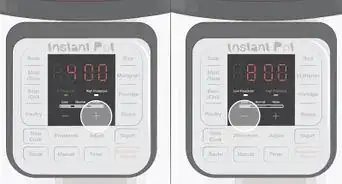
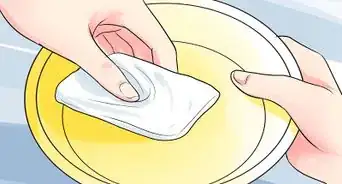

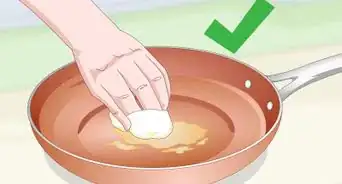
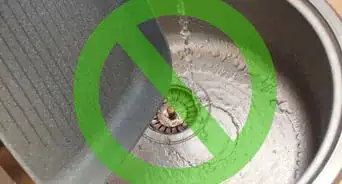
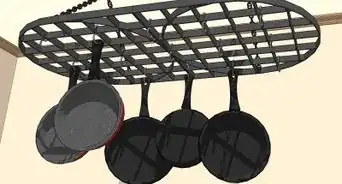
References
- ↑ https://www.bobvila.com/articles/how-to-clean-cookie-sheets/
- ↑ https://www.southernliving.com/food/kitchen-assistant/how-to-clean-burnt-pan-hydrogen-peroxide-baking-soda
- ↑ https://www.southernliving.com/food/grains/rice/how-to-clean-burnt-pan-rice
- ↑ https://www.nytimes.com/wirecutter/guides/how-to-clean-stainless-steel-pans/
- ↑ https://www.epicurious.com/expert-advice/how-to-clean-the-dirtiest-pan-skillet-steel-wool-baking-soda-article
- ↑ https://www.bonappetit.com/story/how-to-clean-sheet-pans-trays
- ↑ https://www.nytimes.com/wirecutter/guides/how-to-clean-stainless-steel-pans/
- ↑ https://www.epicurious.com/expert-advice/how-to-clean-the-dirtiest-pan-skillet-steel-wool-baking-soda-article
- ↑ https://www.bobvila.com/slideshow/11-handy-uses-for-borax-around-the-house-53429
- ↑ https://morningchores.com/borax-uses/
- ↑ https://www.today.com/home/how-clean-pots-pans-dryer-sheets-t121269
- ↑ https://www.architecturaldigest.com/story/how-to-clean-copper-pots-and-pans
- ↑ https://www.foodandwine.com/news/how-clean-cast-iron-skillet-potato
- ↑ https://www.allrecipes.com/article/aluminum-foil-cleaning/
- ↑ https://www.epicurious.com/expert-advice/how-to-clean-the-dirtiest-pan-skillet-steel-wool-baking-soda-article
About This Article

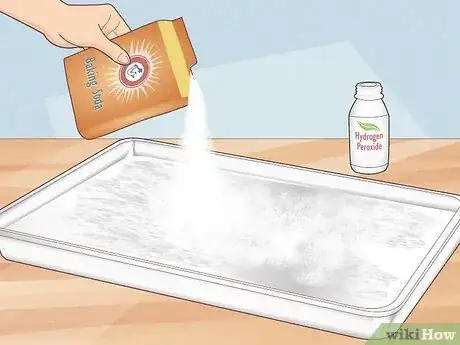
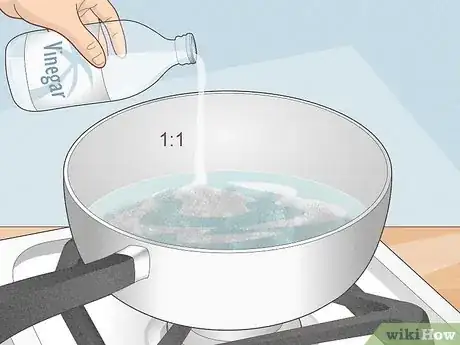
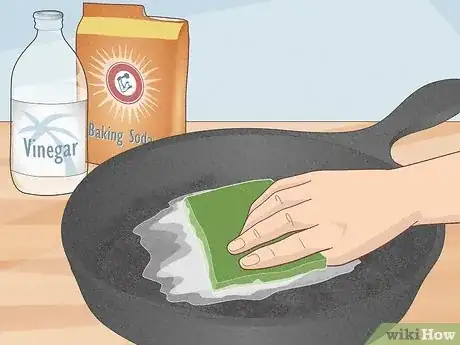
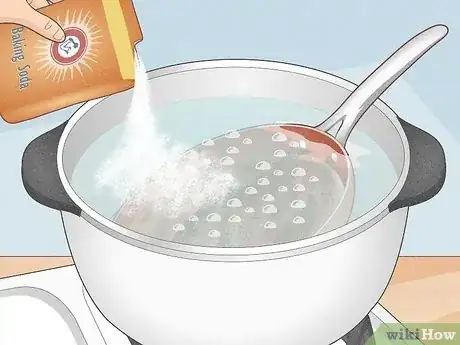
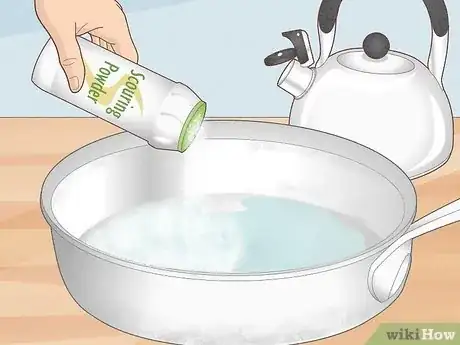
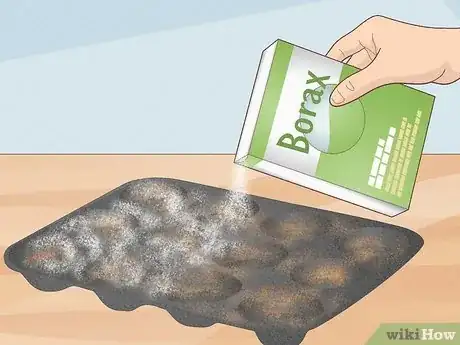
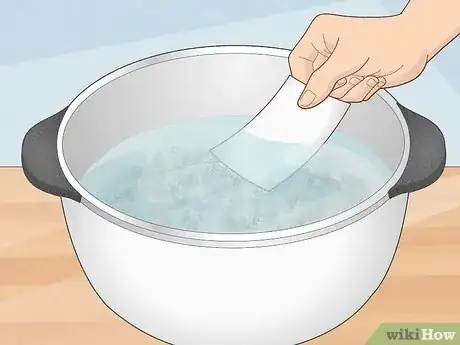

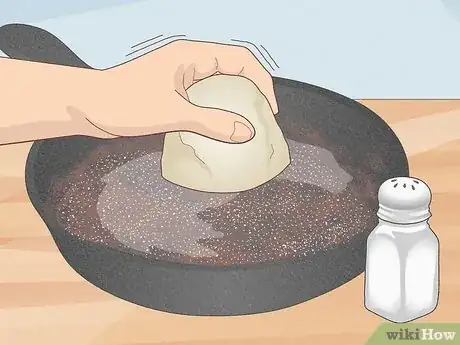








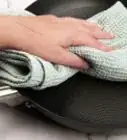
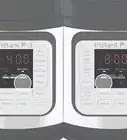
-Step-12-Version-2.webp)
